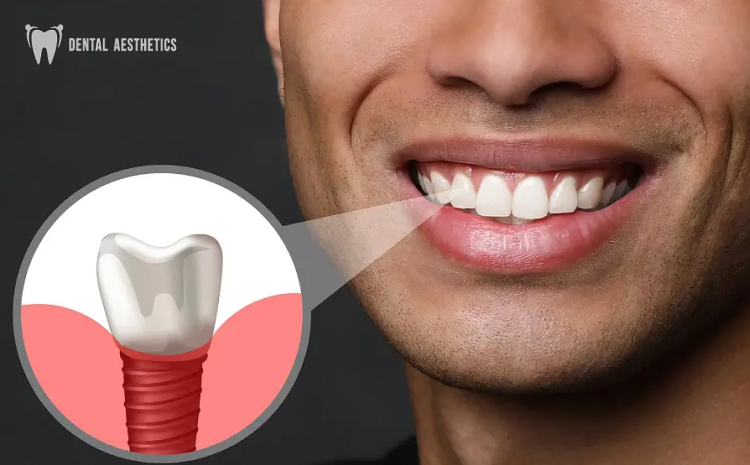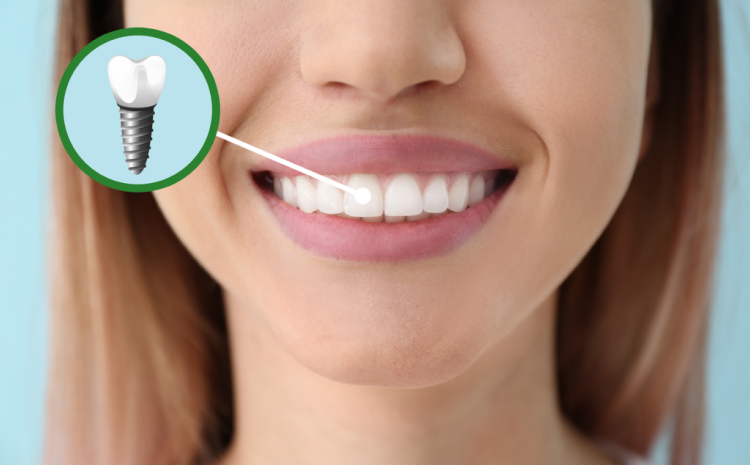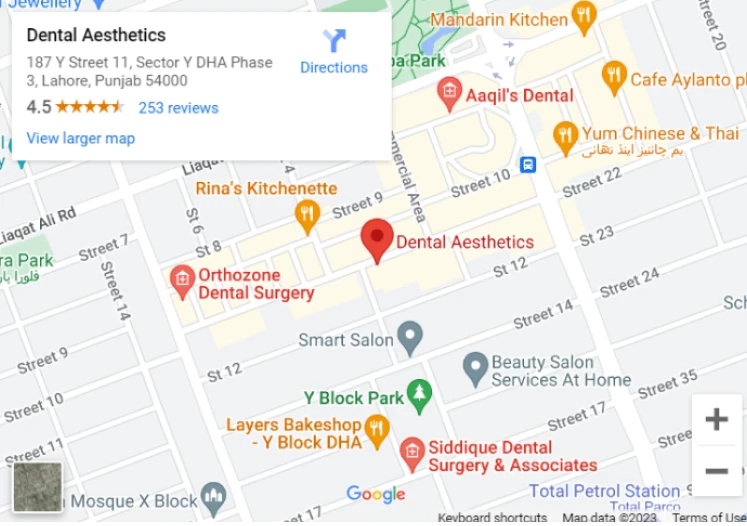How Do Dental Implants Work? A Step-by-Step Guide

May 5, 2025
Introduction
Dental implants represent a groundbreaking advancement in restorative dentistry, providing a permanent and aesthetically superior solution for missing teeth. But how exactly do dental implants function? In this guide, we will explore each stage of the dental implant process, from initial consultation through to long-term care. Whether you are considering implants for yourself or seeking professional insight, this comprehensive guide offers all the essential information you need to make an informed decision.
Understanding Dental Implants
Definition
Dental implants are biocompatible titanium posts surgically embedded into the jawbone to function as artificial tooth roots. These posts serve as a stable base for fixed or removable replacement teeth, closely mimicking the function and appearance of natural dentition.
Components of a Dental Implant
| Component | Description |
|---|---|
| Implant Fixture | Titanium post that integrates with the jawbone |
| Abutment | Connector that supports the crown or prosthesis |
| Crown | The visible, custom-made tooth that resembles a natural tooth |
Types of Dental Implants
- Endosteal Implants – Most commonly used and placed directly into the jawbone.
- Subperiosteal Implants – Positioned under the gum but above the jawbone for patients with insufficient bone height.
- Zygomatic Implants – Anchored in the cheekbone, utilized when jawbone quality is compromised.
Advantages of Choosing Dental Implants
Key Benefits
- Exceptional durability and longevity
- Natural appearance and feel
- Improved speech and chewing capability
- Prevention of bone resorption
- Preservation of facial aesthetics
- No alteration to adjacent teeth required
Comparison Table: Dental Implants vs. Traditional Options
| Feature | Dental Implants | Removable Dentures | Dental Bridges |
|---|---|---|---|
| Durability | 15–25+ years | 5–10 years | 10–15 years |
| Jawbone Preservation | Yes | No | No |
| Aesthetics | Excellent | Moderate | Good |
| Initial Cost | Higher | Lower | Moderate |
| Maintenance | Low | High | Moderate |
Candidacy for Dental Implants
Ideal Candidates
- Healthy gum tissue and adequate bone density
- Non-smokers or those willing to quit
- Absence of chronic systemic diseases (e.g., uncontrolled diabetes)
- Commitment to oral hygiene and routine dental care
Diagnostic Evaluation
- Intraoral examination
- Digital X-rays and 3D imaging
- Active smoking habit
- Bone density assessments
Contraindications and Considerations
- Periodontal disease
- Severe bone loss
- Active smoking habit
- Certain medications (e.g., bisphosphonates)
Step-by-Step Breakdown of the Dental Implant Procedure
Step 1: Comprehensive Consultation
- Detailed dental and medical history review
- Oral cavity evaluation and radiographic imaging
- Development of a customized treatment plan
Step 2: Tooth Extraction (If Required)
- Removal of irreparable or decayed teeth
- Healing period prior to implant placement
Step 3: Bone Grafting Procedures
- Removal of irreparable or decayed teeth
- Healing period prior to implant placement
| Type of Graft | Description |
|---|---|
| Autograft | Harvested from the patient’s own bone (e.g., hip or jaw) |
| Allograft | Sourced from a human donor |
| Xenograft | Derived from an animal source, typically bovine |
| Alloplast | Synthetic bone substitute |
Step 4: Surgical Placement of the Implant
- Administration of local anesthesia
- Incision made to expose the bone
- Precise drilling and placement of the titanium post
- Sutures to facilitate healing
Step 5: Osseointegration Phase
- Duration: 3–6 months
- Bone integrates with the implant, creating a strong anchor
Step 6: Abutment Installation
- Minor surgical procedure
- Abutment is attached after healing
- Gum tissue contours around the abutment
Step 7: Final Restoration
- Custom crown fabrication based on digital impressions
- Crown secured to the abutment
- Function and aesthetics restored
Postoperative Care and Recovery Guidelines
Immediate Post-Surgical Care
- Application of cold compresses to reduce swelling
- Use of prescribed pain medication
- Adherence to a soft food diet
- Limitation of strenuous activities for several days
Long-Term Oral Hygiene Practices
- Twice-daily brushing with a soft-bristled toothbrush
- Daily flossing and use of interdental brushes
- Regular dental checkups and professional cleanings
Recovery Timeline Overview
| Time Frame | Healing Milestone |
|---|---|
| First 24 Hours | Minor bleeding and swelling may occu |
| First Week | Sutures begin to dissolve or are professionally removed |
| 1–2 Months | Progressive bone integration |
| 3–6 Months | Complete osseointegration and readiness for restoration |
Potential Risks and Complications
Common Complications
- Infection at the implant site
- Nerve damage or altered sensation
- Implant failure due to poor osseointegration
- Sinus issues (in upper jaw implants)
Risk Mitigation Strategies
- Selecting a qualified implantologist
- Adhering strictly to postoperative guidelines
- Maintaining rigorous oral hygiene

Financial Considerations and Payment Options
Cost Breakdown per Dental Implant
| Treatment Component | Estimated Cost (USD) | Estimated Cost (PKR) |
|---|---|---|
| Initial Consultation | $100 – $200 | PKR 28,000 – PKR 56,000 |
| Tooth Extraction | $75 – $300 | PKR 21,000 – PKR 84,000 |
| Bone Grafting Procedure | $300 – $3,000 | PKR 84,000 – PKR 840,000 |
| Implant Surgery | $1,000 – $3,000 | PKR 280,000 – PKR 840,000 |
| Abutment and Crown | $500 – $3,000 | PKR 140,000 – PKR 840,000 |
| Total Estimated Cost | $3,000 – $6,000 | PKR 840,000 – PKR 1,680,000 |
Financing and Insurance
- Limited coverage through dental insurance
- In-house and third-party financing plans
- Use of Flexible Spending Accounts (FSA) and Health Savings Accounts (HSA)
Longevity and Maintenance of Dental Implants
Implant Lifespan
- Typically 15–25 years or longer with proper care
- Influenced by individual lifestyle and oral hygiene
Maintenance Checklist
- Daily brushing and flossing
- Routine dental exams and cleanings
- Avoidance of tobacco use and excessive alcohol
- Use of mouthguards for bruxism (teeth grinding)
Conclusion
Dental implants provide a long-term, functional, and aesthetically pleasing solution for tooth loss. By understanding each phase of the process—from consultation through long-term care—you can make informed decisions that promote oral health and overall well-being. Partnering with a skilled dental professional and maintaining diligent oral hygiene are critical components to the enduring success of your dental implants.
Whether you are at the beginning of your dental implant journey or evaluating your options, this guide is designed to support you every step of the way.
Frequently Asked Questions (FAQs)
What is the success rate of dental implants?
Dental implants boast a high success rate of 95% to 98%, depending on location and patient health.
Is the procedure painful?
Discomfort is generally minimal and managed effectively with local anesthesia and post-operative medications.
What is the typical timeline for the implant process?
From consultation to final crown placement, the process generally spans 3 to 9 months.
Are same-day dental implants available?
Yes, immediate-load implants are possible in select cases, contingent upon sufficient bone volume and stability.
Are dental implants safe?
Dental implants are a proven and safe solution with decades of successful outcomes in clinical settings.
What foods should be avoided during recovery?
Patients should avoid hard, sticky, and crunchy foods during the initial healing phase.
Can individuals who smoke receive dental implants?
Yes, but smoking significantly increases the risk of complications and implant failure.
Will my insurance cover the cost of implants?
Coverage varies; most plans offer partial reimbursement for certain stages of the procedure.
What options exist for patients with insufficient bone?
Bone grafting or alternative implant techniques, such as zygomatic implants, may be suitable.
How should dental implants be cleaned?
Use of a soft-bristled toothbrush, interdental cleaners, and antimicrobial mouth rinses is recommended.


